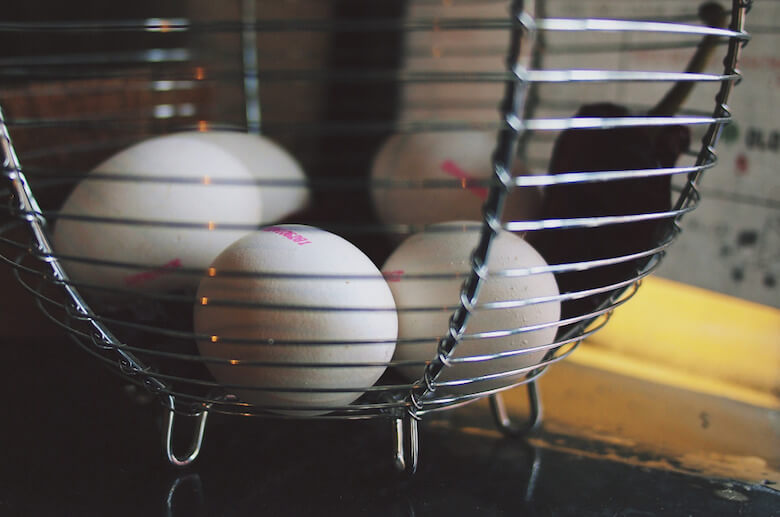
Science is all around us. Young kids are actively testing theories too, even if they’re not doing an official school-led, preschool science experiment. For example, repeated ball throwing, water splashing and banging on things is part of sensory development, which we wrote about here.
The neat thing about science, however, is that often remains a ‘secret’ until we discover it. It’s not always what we expect to happen as a result of some action we do. As a child, the world around us is not as obvious as it is to adults. So it can be a delight when a caregiver does simple science experiments with toddlers and preschoolers. These can be as simple as baking cookie dough (chemistry) or planting seeds in the garden (biology). But they can also involve other materials that would be worthy of a white lab coat! (A pretend one of course!)
As a daycare centre focused on early childhood development curriculums, we love keeping kids active and engaged with science activities appropriate for early childhood years. Here are some ideas you can do at home with your child. This is one way to keep learning fun long after they end their day with an early childhood educator.
1) Toddler science experiment with fizzy baking soda and vinegar
You can do this toddler science experiment in your kitchen with really inexpensive materials: just baking soda and vinegar! Put baking soda in a plastic cup, and then add vinegar. What do you get? The fizzies! You can also use a pan, turkey baster and food colouring to make this activity more artful, as inspired by this post.
2) Celery food colouring experiment: change the colour of celery to learn how water travels
This is also an easy, inexpensive experiment that can teach kids how water travels upward. It can explain a lot about why grown ups put flowers in a vase of water, and how tall trees get water all the way up to their branches and leaves.
This video on YouTube explains all the steps, while this video explains the science of how plants ‘drink up’ their water! You basically put a clipped celery stalk into some food-coloured water and wait!
3) Preschool science experiment with vibrations: the tin can phone we all loved as kids
You probably remember this preschool science experiment, which teaches kids how sound travels through vibrations.
Here is a lesson with instructions on making this cool science experiment and fun hand-made toy. Please make sure you get a grown-up’s help with this one! Don’t leave kids alone with the hammer and nails.
4) Teach toddlers and preschoolers about acidity with food science experiments that clean pennies and dissolve eggshells
Did you know that some foods we put in our mouths can clean pennies, or even make egg shells dissolve?! It’s true! See this blog post to learn about foods that clean pennies, and try them all with your kids!
Next, immerse an egg inside a cup of of vinegar and wait until the shell seems to disappear. If you follow the science experiment in this video, you’ll also see that the vinegar enlarges the egg, whereas corn syrup shrinks it.
These are great lessons to teach kids about how foods affect our bodies – like our teeth! That way, the next time you tell your kids they can’t have that can of pop, they’ll hopefully understand what you mean!
Aside from health, it can also teach kids about the differences in acidity and alkalinity, as well as oxidation. Though, we understand these explanations may be a bit advanced for early childhood science lessons. However, seeing the visuals of these changes taking place while they’re young can serve as a helpful ‘connector’ when they are old enough to learn about these science topics.
Teach kids how to make hypotheses and perform scientific tests
Before you do all of these science experiments with toddlers and preschoolers, be sure to ask them what they think will happen. If you think the class is ready for it, make charts documenting your hypotheses and end results. Then, try the experiments again but change one factor only, such as a new liquid or material.
This can be a great way to teach kids how real science experiments work. As they get older, they’ll learn how facts about our universe are concluded, and where all their science lessons came from, in a sense. The goal is also to understand how to ask more questions, and advance knowledge by building upon it.
Here is an example of documenting a science experiment with young children, using an egg drop test. Apply the same principles to any other science experiment with preschoolers and toddlers.
Remember, science doesn’t stop in the lab!
While you may set up makeshift science labs to do the preschool appropriate science experiments mentioned above, remember that science goes far beyond that. Next time you’re out in the rain, be sure to point out to your kids that the water is helping the plants to grow, just like they saw with the celery experiment. If they see a pelican poking at plastic, remind them that some things are not good to eat. When preparing dinner, see how heat affects the consistency of foods like cheese or butter. If kids cover their ears, ask them how it’s possible to still hear sounds. These, and more, can all be explained by science!
See more on our blog:
